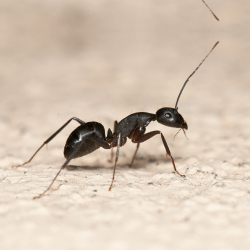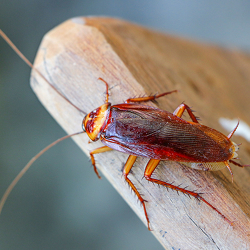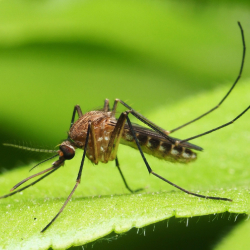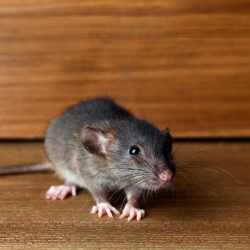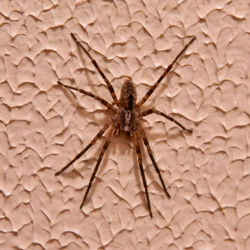Advanced Mouse Elimination Techniques for Lasting Results
Unlike DIY approaches that only address visible mice, our comprehensive mouse control strategy targets the entire population and prevents re-infestation through professional exclusion methods. We understand the unique behaviors of mice in Southern California homes and customize our approach accordingly.
Our mouse control services include:
- Detailed property inspection to identify entry points as small as a dime
- Precision trapping systems placed along established mouse pathways
- Complete exclusion work to seal all potential access points
- Sanitization of affected areas to eliminate disease-causing pathogens
- Preventative recommendations to keep mice from returning
We go beyond temporary solutions to provide permanent relief from mouse problems through our methodical, proven approach to mouse control.
Common Mouse Species in Orange County Homes
House Mouse
The most frequent invader of Orange County homes, house mice are small rodents with:
- Grayish-brown fur and cream-colored underbellies
- Small bodies (2-4 inches) with relatively large ears
- Pointed snouts and scaly tails equal to their body length
- High adaptability to indoor environments
- Ability to squeeze through openings as small as a dime
- Preference for cereals, grains, and carbohydrate-rich foods
- Extremely prolific breeding capabilities (up to 8 litters per year)
Deer Mouse
Less common in urban areas but sometimes found in homes near natural spaces, deer mice have:
- Distinctly bicolored appearance with brown backs and white underbellies
- Larger ears and eyes compared to house mice
- White feet and bicolored tails (dark on top, white underneath)
- Preference for seeds, nuts, fruits, and insects
- Natural habitats in rural, wooded, or brushy areas
- Significant health risk as carriers of hantavirus
- Tendency to enter homes during colder months
Correctly identifying the mouse species is crucial to implementing the most effective control strategy. Our technicians are experts at recognizing the specific characteristics and habits of each mouse species found in Orange County.
Signs of a Mouse Infestation in Your Home
Physical Evidence
- Mouse droppings (small, dark pellets about ¼ inch long)
- Gnaw marks on food packaging, wires, furniture, or structural elements
- Nesting materials (shredded paper, fabric, or insulation) in hidden locations
- Tracks or tail drag marks in dusty areas
- Unusual pet behavior and interest in walls, cabinets, or appliances
Sounds and Smells
- Scratching, scurrying, or squeaking sounds in walls or ceilings
- Musty, ammonia-like odors from urine and droppings
- These signs are especially noticeable at night when mice are most active
Visual Sightings
- Live mice, especially after dark (indicates a significant population)
- If you see one mouse, there are likely many more hiding in walls, attics, or other concealed areas
Multiple signs indicate an established infestation requiring professional intervention. The longer mice remain in your home, the larger the population grows and the more extensive the contamination becomes.
Health Risks Associated with Mouse Infestations
Mice aren’t just annoying—they pose serious health hazards to your family:
Disease Transmission
- Hantavirus Pulmonary Syndrome: Potentially fatal respiratory disease primarily carried by deer mice
- Salmonellosis: Food poisoning caused by mouse fecal contamination
- Lymphocytic choriomeningitis: Viral infection that can cause neurological complications
- Leptospirosis: Bacterial infection transmitted through mouse urine
Allergen Exposure
- Mouse dander, urine, and droppings contain powerful allergens
- These can trigger asthma attacks and allergic reactions, especially in children
- Prolonged exposure can lead to chronic respiratory conditions
Secondary Pest Introductions
- Mice often carry fleas, ticks, and mites into homes
- These parasites can infest your living spaces and pets
- They may transmit additional diseases like Lyme disease and Rocky Mountain spotted fever
The health risks alone make professional mouse control an essential investment in your family’s wellbeing.
Property Damage Caused by Mice
Beyond health concerns, mice cause extensive damage to homes:
Electrical System Damage
- Mice constantly gnaw on wiring, creating fire hazards
- This can lead to short circuits, damaged appliances, and electrical fires
- Wiring damage inside walls often goes undetected until a major problem occurs
Structural Damage
- Mice chew through drywall, wooden structures, and PVC piping
- They create holes in floors, walls, and cabinets
- Extensive gnawing can compromise insulation and building materials
Food and Property Contamination
- Mice contaminate far more food than they consume
- Personal belongings, furniture, and keepsakes can be permanently damaged
- Urine and droppings render many items unsalvageable
The cost of repairing mouse damage often far exceeds the price of professional mouse control services.
Our Comprehensive Mouse Control Process
1. Thorough Inspection
Our licensed technicians begin with a detailed property assessment:
- Identifying all existing and potential entry points
- Locating nesting sites and high-activity areas
- Determining the extent of the infestation
- Assessing damage and contamination levels
2. Customized Treatment Strategy
Based on our findings, we develop a targeted control plan:
- Strategic trap placement along identified mouse travel routes
- Selection of the most effective trapping methods
- Comprehensive exclusion recommendations
- Sanitation protocols for contaminated areas
3. Professional Exclusion
We seal your home against mouse entry:
- Closing all gaps and openings as small as ¼ inch
- Using durable, mouse-proof materials (steel wool, metal flashing, cement)
- Installing door sweeps and weather stripping
- Protecting vents and utility penetrations with appropriate screening
4. Effective Trapping Systems
Our technicians implement specialized trapping methods:
- Precisely placed in high-activity zones
- Regularly monitored and adjusted
- Maintained until all mouse activity ceases
- Safe removal and disposal of captured mice
5. Sanitization and Decontamination
After the mice are eliminated:
- Thorough cleaning of affected areas
- Removal of contaminated insulation and nesting materials
- Application of sanitizing agents
- Deodorizing treatments to eliminate mouse odors
6. Prevention and Education
To ensure lasting protection:
- Detailed guidance on storage and housekeeping practices
- Recommendations for landscape modifications
- Follow-up inspections to confirm successful elimination
- Ongoing prevention strategies
Why Choose Saddleback for Mouse Control
Since 2008, Saddleback Termite & Pest Control has been providing effective mouse control solutions to Orange County homeowners. Our approach offers several advantages:
- Complete elimination instead of ongoing management
- Specialized knowledge of local mouse species and behaviors
- Comprehensive exclusion methods to prevent re-infestation
- Family and pet-friendly options for safe mouse control
- Licensed, experienced technicians trained specifically in rodent control
- Satisfaction guarantee on all mouse control services
- Emergency response for urgent mouse problems

